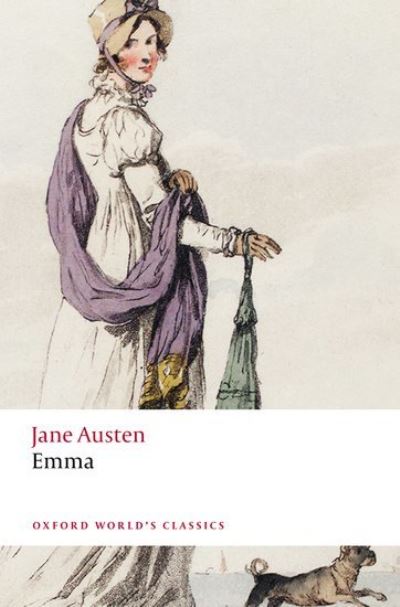LoveReading Says
While Pride and Prejudice may sit at the top of many people’s favourite Jane Austen books, Emma has to be a contender for the title too. For me Emma has a little more bite, it isn’t quite as comfortable a read as Pride and Prejudice, and that makes it more interesting. In terms of lead characters Emma is right up there, she may be headstrong, snobbish, convinced she knows best, yet because of those characteristics, because she isn't perfect, she also feels so very real. Emma is a bright, beautifully written novel with real heart and I love it.
Visit our '50 Classics Everyone Should Read' collection to discover more classic titles.
Visit our 'Women's Words - 60+ works of feminist-minded fiction' to explore our collection of feminist-minded fiction from around the world, and across centuries.
Liz Robinson
Find This Book In
Emma Synopsis
'I wonder what will become of her!'
So speculate the friends and neighbours of Emma Woodhouse, the lovely, lively, wilful,and fallible heroine of Jane Austen's fourth published novel. Confident that she knows best, Emma schemes to find a suitable husband for her pliant friend Harriet, only to discover that she understands the feelings of others as little as she does her own heart. As Emma puzzles and blunders her way through the mysteries of her social world, Austen evokes for her readers a cast of unforgettable characters and a detailed portrait of a small town undergoing historical transition.
Written with matchless wit and irony, judged by many to be her finest novel, Emma has been adapted many times for film and television. This new edition emphasises the novel's extraordinary technical audacity. While apparently conservative in its choice of setting and range of characters, it was - and is - a formally revolutionary work.
About This Edition
About Jane Austen
Jane Austen was born on 16 December 1775 at Steventon near Basingstoke, the seventh child of the rector of the parish. She lived with her family at Steventon until they moved to Bath when her father retired in 1801. After his death in 1805, she moved around with her mother; in 1809, they settled in Chawton, near Alton, Hampshire. Here she remained, except for a few visits to London, until in May 1817 she moved to Winchester to be near her doctor. There she died on 18 July 1817.
As a girl Jane Austen wrote stories, including burlesques of popular romances. Her works were only published after much revision, four novels being published in her lifetime. These are Sense and Sensibility (1811), Pride and Prejudice (1813), Mansfield Park (1814) and Emma (1816). Two other novels, Northanger Abbey and Persuasion, were published posthumously in 1818 with a biographical notice by her brother, Henry Austen, the first formal announcement of her authorship. Persuasion was written in a race against failing health in 1815-16. She also left two earlier compositions, a short epistolary novel, Lady Susan, and an unfinished novel, The Watsons. At the time of her death, she was working on a new novel, Sanditon, a fragmentary draft of which survives.
Fellow novelist Katharine McMahon on Jane Austen...
I can't not choose her. And whichever I've read last is always my favourite. The nuance of emotion, the understanding of human nature revealed by Austen constantly delights me. When I reread Sense and Sensibility recently, for the first time Elinor came across as quite prissy and destined to marry a rather spineless husband. I wonder if that was intended?
More About Jane Austen
